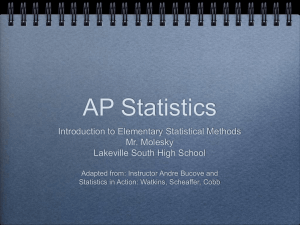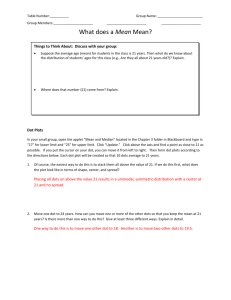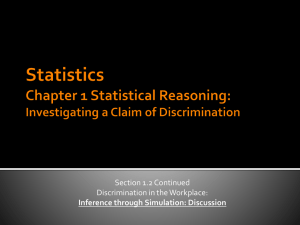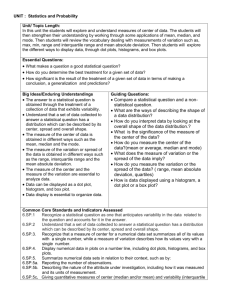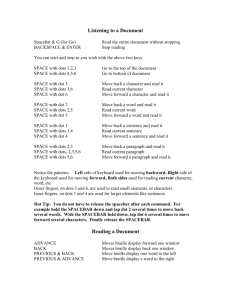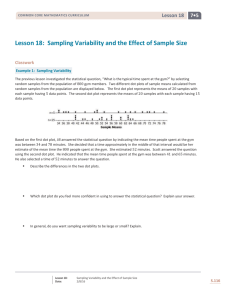Investigating a Claim of Discrimination
advertisement
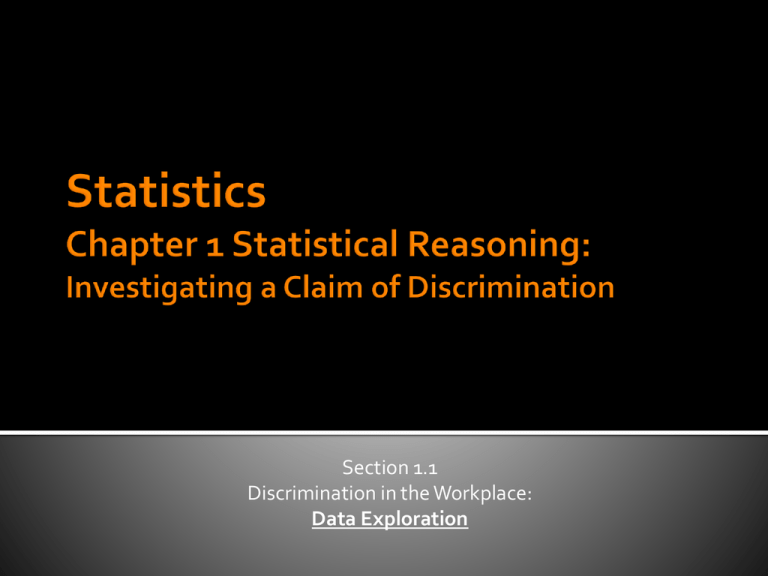
Section 1.1 Discrimination in the Workplace: Data Exploration Exploration: Informal, open-ended examination of the data. What does “open-ended” mean? You are uncovering and summarizing patterns. Inference: Follows strict rules and focuses on judging whether the patterns you found are what you would expect. You use this inference to make a specific decision about your exploration. We will use this in section 1.2 Get familiar with the ideas of statistical thinking, without worrying about the details of calculations. Avoid getting caught by the trap of doing and not understanding what you did or why. Focus on the why and let the how come through practice. Methods of stats can’t overtake the meaning. Cases: The subjects or objects of the study. Variables: The characteristics of the cases that are being studied. Variability: It is what statistics is all about. Characteristics of cases differ. We are exploring and making inferences about the variability. It makes our world inexact to our understanding, but non-the- less interesting. Stats could be defined as the science of learning from data in the presence of variability Refer to page 4 and 5 in text book. Distribution: What the values of the characteristic measurements are and how often each occurs. This distribution is often shown with graphs or plots. The dot plot is the first we will discuss. Example: # of siblings of students Dot Plot: A number line that shows the spread of the data with dots above the numbers where the data lies. More dots mean more data points at that value. Refer to Westvaco spreadsheet… (p. 5 and 6) Let’s look at “Age” of salaried retained workers (labeled “0”) Compare that to age of salaried laid off workers (labeled “1,2,3,4,5”) Is there a pattern or difference that you can see from a dot plot? 2 Way Table: Shows details of data in rows and columns. Cases are in rows and characteristics are in columns. This can be used to show similarities or differences in quantities and proportions. See page 6. Laid off Retained Total Under 50 6 10 16 50 or Older 12 8 20 Total 18 18 36 Compare text book display 1.3 – Salaried workers to display 1.5 – Hourly workers. Which gives stronger evidence in support of a claim for age discrimination? Why? If time permits: Page 9 Practice #s: 1, 2, 3 Page 9: Exercises 1, 2, 3, 5, 7

